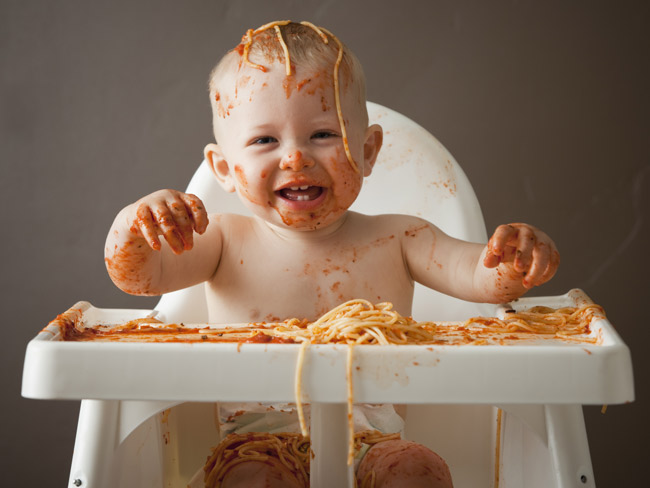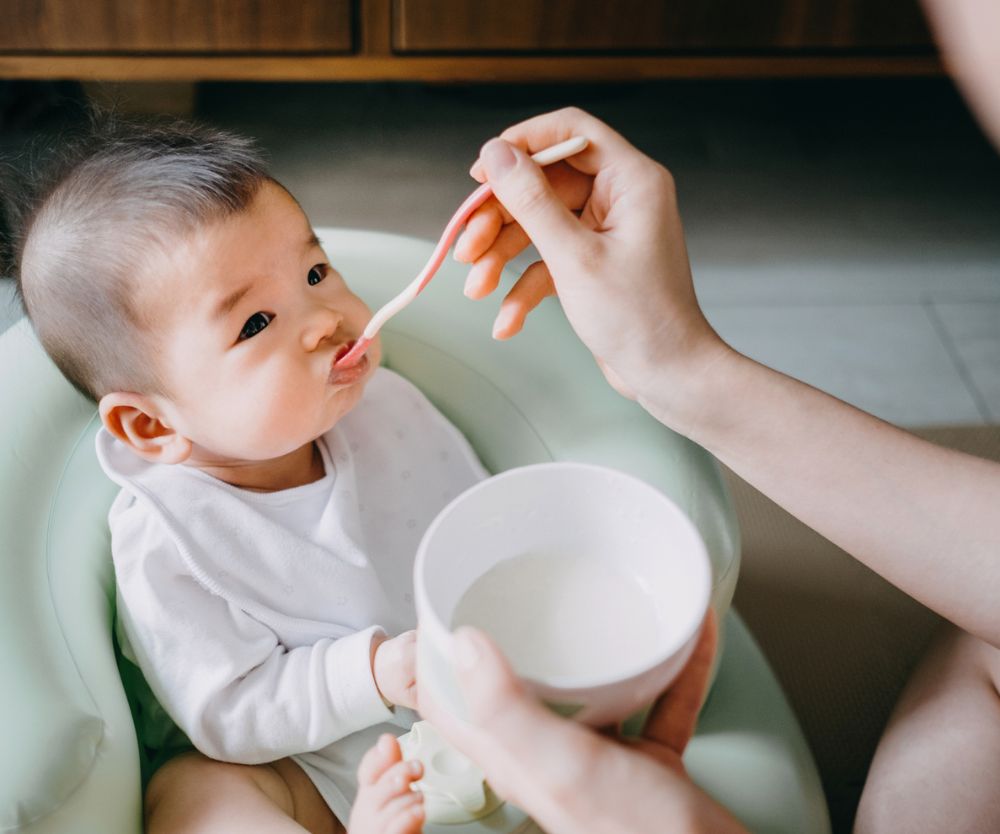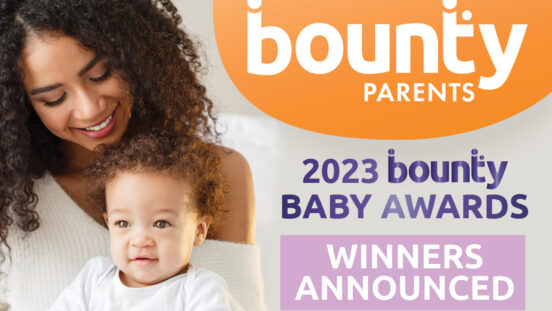Baby Good Food Guide

Think outside the rice-cereal box with these tasty, easy recipes
Once your little one has reached the age of six months, the next step in his foodie adventures can begin, and you can make the experience as colourful, tasty and wholesome as you want. Provided it’s pureed to a smooth texture, your baby’s first food can be any vegetable, grain, fruit, meat or fish you like. You don’t even need to wait a few days between offering different foods, but offering foods rich in iron is an important consideration.
Try whipping up these appealing purees and check out the useful advice from nutritionist and M&B expert Joanna McMillan in this extract from a new book about feeding babies and toddlers by The Australian Women’s Weekly food team.
Ready, set, go!
There’s no definitive guide for which foods to introduce first, nor do you need to stick to the now out-of-date advice to wait a few days before introducing a new food to bub. The goal for a baby aged between six and nine months is to increase the variety of foods he eats, ensuring he obtains all the nutrients he requires – particularly iron – and moving gradually from pureed, silky smooth foods to foods with a mushy lumpy consistency. This is important for developing the muscles he needs for chewing and speech.
When introducing new foods to bub, follow these basic guidelines.
1. When you first introduce solids to your little one, foods should be smooth. Start by pureeing food, then after a month or so gradually move towards mashing. By nine months your baby should be managing to eat lumpy foods with some texture. By this stage you can simply mash foods with a fork.
2. Whole nuts and other hard foods are a choking hazard and many parents are unaware they should not be introduced to bub until after the age of three. This also includes popcorn. You can, however, offer him smooth nut butters. These are rich in healthy fats, fibre, plant protein, magnesium and other essential nutrients.
3. Do not add any salt to your baby’s food. Serving bub family meals as early as possible makes life much easier for you as a parent, and your baby gets accustomed to a variety of tastes right from the start. But always cook without adding salt so you can puree a portion for your baby.
4. Don’t add any sugar to baby meals. Babies have an innate likeness for sweet tastes, but adding sugar to their meals is simply giving them kilojoules without additional nutrients. Honey has a tiny, but nevertheless present, risk of carrying the bacteria that causes botulism, a nasty illness. Offering bub honey is not recommended until the age of 12 months.
5. Iron is a key nutrient requirement at this stage of your child’s development. There are two types: haem iron found in animal foods including meat, fish and poultry; and non-haem iron found in plant foods such as legumes, tofu and leafy greens like spinach. Haem iron is absorbed four times better than non-haem iron. You can also feed your little one iron-fortified baby cereals, but these can cause constipation.
6. Baby rice cereal is essentially a highly processed food with an extremely high glycaemic index (GI). These foods were not available until relatively recently, so they’re certainly not necessary to feed to your baby. You’re much better off buying fresh, whole foods and processing them yourself to the required consistency.
The allergy question
One important change to feeding guidelines relates to potentially allergenic foods like eggs, peanuts and cow’s milk. The Australasian Society of Clinical Immunology and Allergy states that delaying the introduction of these foods does not reduce the risk of allergies or eczema. There is some suggestion that avoiding these types of foods during pregnancy, breastfeeding and infancy actually increases the likelihood of an allergy. Until more is understood about what causes food allergies, the advice is to include these foods as appropriate.

Raspberry and pear yoghurt
Suitable from 6 months
Prep + cook time 15 minutes
(+ 5 minutes cooling)
Makes ¾ cup
Melt 10g butter in a small saucepan over medium heat. Add 1 peeled, cored and thinly sliced medium ripe pear and 125g fresh or frozen raspberries. Cook, stirring occasionally, for 10 minutes or until pear is tender. Cool, then blend until smooth. Transfer to a small bowl, then fold through ¾ cup (225g) plain yoghurt. Serve as much as your child desires.
TIP Cover and store in the fridge for up to two days. This recipe is not suitable to freeze. Instead of raspberry and pear, use other fruits such as apple, plum, banana, blueberries and nectarines.

Cauliflower, pumpkin and cheddar puree
Suitable from 6 months
Prep + cook time 20 minutes
(+ 5 minutes cooling)
Makes 1 cup
Boil, steam or microwave 125g cauliflower florets and 200g coarsely chopped peeled pumpkin until tender. Drain, cool slightly, then blend or process with 2 tablespoons coarsely grated cheese until smooth. If necessary, add 1 tablespoon cooled boiled water to thin puree. Cool slightly. Serve as much as your child desires.
TIP Cover and store in the fridge for up to two days. Freeze in 1-tablespoon portions in ice-cube trays. Cover and store in the freezer for up to one month.

Chicken, corn and risoni puree
Suitable from 6 months
Prep + cook time 25 minutes
(+ 5 minutes cooling)
Makes 1 cup
Place 100g coarsely chopped chicken breast fillet, 1¼ cups water, 1 cup fresh or frozen corn kernels and 1 tablespoon risoni pasta in a small saucepan over high heat. Bring to the boil. Reduce heat and simmer, uncovered, for 10 minutes or until pasta is tender and chicken cooked through. Cool slightly, then blend or process mixture until smooth. Push through a sieve. Serve as much as your child desires.
TIP Cover and store in the fridge for up to two days. Freeze in 1-tablespoon portions in ice-cube trays. Cover and store in the freezer up to one month.
This is an edited extract from The Australian Women’s Weekly Food For Babies & Toddlers (Bauer Media Books, $29.95), available where all good books are sold and online at www.magshop.com.au.




